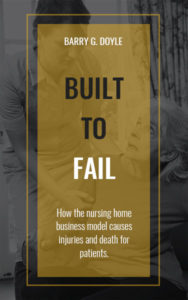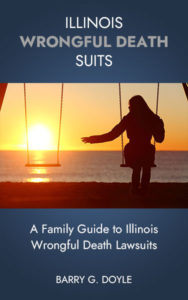The Illinois Department of Health has cited and fined Evercare at University when nursing staff dismissed a 95-year-old resident’s severe breathing distress as a “panic attack” and failed to seek immediate medical attention despite dangerously low oxygen levels. The resident was eventually hospitalized on a ventilator after her family called 911, with emergency responders finding her oxygen saturation at a life-threatening 50 percent.
The resident in question, who was cognitively intact and on dialysis three times per week, had been readmitted to the facility after a hospital stay for pulmonary edema and was already on continuous oxygen therapy. On the evening of the incident, she began experiencing severe shortness of breath and repeatedly called out “I can’t breathe, I can’t breathe.” Multiple staff members heard her distress but repeatedly told her to “calm down” and dismissed her condition as a panic attack rather than recognizing it as a medical emergency.
The Licensed Practical Nurse on duty that evening later admitted she “got called in because another nurse did not show up” and was immediately handed medication cart keys and placed on a lengthy phone call. When the resident’s oxygen saturation was measured at 76 percent, the nurse acknowledged that “we normally send residents out to the hospital when the oxygen is 84% or less,” but chose not to do so because “it was a crazy night” and she believed the resident “was having a panic attack and just wanted someone to sit with her.” The nurse stated she was “not sure” if she contacted the doctor, violating the facility’s change of condition policy requiring immediate physician notification.
A Certified Nursing Assistant took vital signs but failed to document them in the computer system, instead writing them “down on a piece of paper” and giving them to the nurse. When asked about the specific readings, the assistant said she “can’t remember what they were.” Multiple staff members interviewed confirmed they do not routinely take or document vital signs, with one stating “the nurses usually take their own vitals” and another saying “I will take a vital if the nurse asks me to. Otherwise, I normally do not take vitals.”
The resident’s family member received a call around 7:00 PM telling them their mother was having a panic attack. Upon arriving at the facility, the family member found their mother “gasping for air” and “in distress,” describing the scene as “unimaginable.” Unable to locate nursing staff for assistance, the family member called 911 directly. The family member stated, “I don’t know why the facility did not send my mom out when she started having problems, I am at loss.”
Emergency Medical Services arrived to find the resident in severe respiratory distress with an oxygen saturation of only 50 percent, far below the normal range of 92 percent or higher. The EMS report documented that the resident’s “skin was flush and blue in extremities” and she had “shallow and rapid respirations.” When paramedics attempted to get a report from nursing staff, they were told only that the resident “has been struggling to breathe for several hours” and that the nurse “came into the patient’s room several times to tell her to calm down and slow her breathing for several hours.”
The resident required immediate advanced life support interventions, including multiple intubation attempts and the use of an emergency airway device. She was transported to the hospital where she was placed on mechanical ventilation due to “hypoxic respiratory failure and severe respiratory distress.” The hospital records confirmed she arrived “cyanotic with a SPO2 of 50% with labored breathing” and required the highest level of critical care intervention.
The facility’s Medical Director stated that he would expect “all oxygen levels to be at 92% or higher” and that if a resident was saying they could not breathe with oxygen levels at 76 percent, he would expect staff to “send them out immediately.” He emphasized that “if they were in distress, I would want them sent out immediately.” The Director of Nursing confirmed that she expects “all vitals to be charted and in the resident’s medical records” but was unaware that the resident was in distress with her oxygen levels.
The incident revealed multiple systemic failures, including inadequate staffing with nurses covering multiple units, failure to properly document vital signs, dismissal of serious medical symptoms, and violation of the facility’s own policies requiring physician notification and hospital transfer for residents with dangerously low oxygen levels. The resident’s care plan failed to address her oxygen needs or respiratory issues despite her documented pulmonary problems and recent hospitalization for fluid in her lungs.
One of our core beliefs is that nursing homes are built to fail due to the business model they follow and that unnecessary accidental injuries and wrongful deaths of nursing home residents are the inevitable result. Our experienced Chicago nursing home lawyers are ready to help you understand what happened, why, and what your rights are. Contact us to get the help you need.


